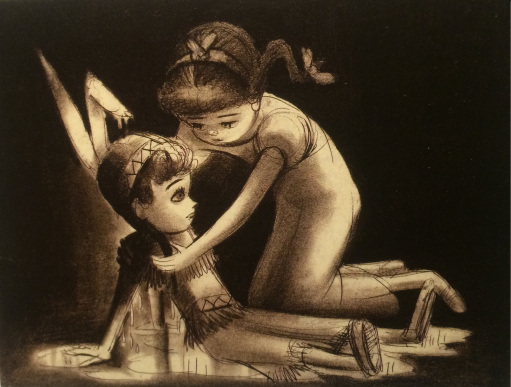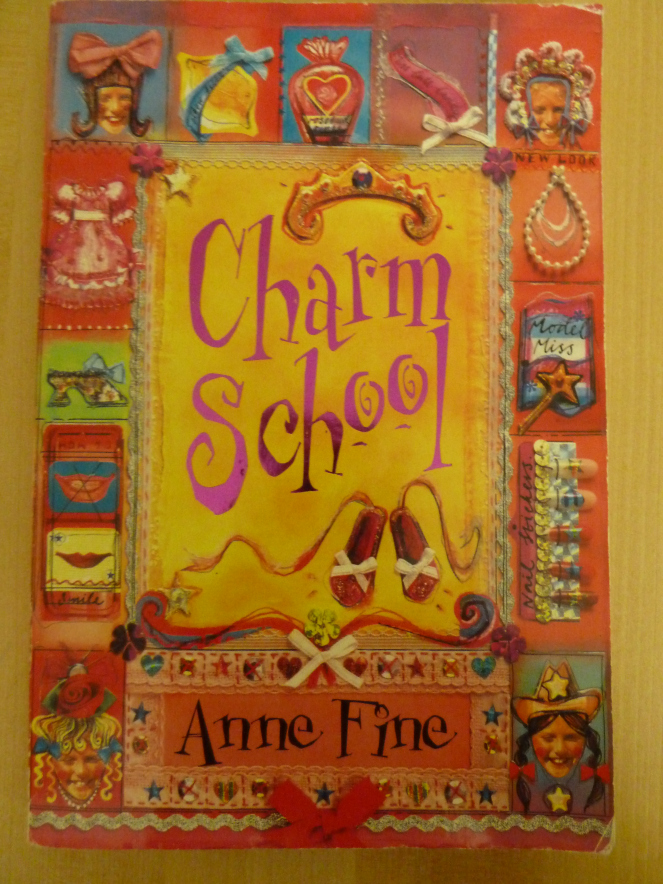
Lately I’ve been thinking a lot about the girls of Peter Pan and how they are often overshadowed by the much flashier Peter. This really disappointing to me, as they’ve always been my favorite part of the story. A lot of people do not even realize that Wendy Darling is the film’s main character, as the plot focuses on her story and her decision to grow up. To help rectify this misconception, I thought I’d feature a drawing of two of the girl’s of Neverland, Wendy Darling and Tiger Lily. This drawing was created during the early 1940s when the film was meant to be released soon after Pinocchio. At this time, the film was styled on the concept art of one of my favorite Disney artists, David Hall, whose Alice in Wonderland concept art I featured in a previous post. Although this particular drawing was not necessarily created by Hall himself, it certainly follows the style and tone of his concept art for the film.
One thing you may notice about this particular piece of art is that it is much darker and more full of shadows then any other scene in the final film. Much of Hall’s concept art, and the art made by other artists working on the film at the time, is like this. Their art brought out some of the more mature themes that had often gone unnoticed in this children’s story. In particular they made the scenes with the pirates especialy frightening looking, a far cry from the silly comedic fellows in the final film. This piece of story art is part of a set of story boards illustrating the scene in skull rock. The moody drawings heavily feature horrifying skeletons and show a menacing looking Captain Hook cloaked in shadows. Even this drawing showing Wendy helping save Tiger Lily from drowning features dark moody lighting and in a clear sense of danger in the image of the waterlogged Tiger Lily.
You have probably also noticed how much younger Wendy and Tiger Lily look in this drawing compared to in the final film. This was true of all the children in Hall’s concept art. While the final version of Peter Pan appears to be just on the verge of preteenhood, the Hall inspired version had a young and impishly cherubic face. Disney’s Wendy Darling has a face and a body poised just on the verge of womanhood. David Hall’s version of Wendy appears much younger, with a shorter, more girlish figure, a round face and eyes, and hair in childish pigtails. Even Tiger Lily, whose final design is one of the closest to the David Hall designs, appears much younger in this drawing. Her face did not yet have the sophisticated exotic features she would gain in the final film. These youthful character designs contrasted sharply with the dark shadowy settings Hall designed for the film. This would have really heightened the danger and adventure of the situations the children were in. Had it been made, Hall’s version of Peter Pan would perhaps have presented the story in a new light.
While the characters and story inspired by Hall’s concept art never did come to fruition, they came awfully close. Model sheets for the character were mad up in the very early 1940s and maquettes for this version of several of the characters, including Wendy, can be seen in the behind the scenes tour portion of The Reluctant Dragon. Then World War II hit the U.S., and plan’s for the film were halted. When production started back up on the film in the 1950s, Hall no longer worked as a concept artist at the studio, and Mary Blair’s art became the animators’ main source of inspiration instead. Though I love Peter Pan the way it is, a part of me can’t help but wonder what this earlier, darker version of the film would have been like.
Image Credit: The Walt Disney Film Archives. The Animated Movies 1921–1968 Advertisements Share this:




